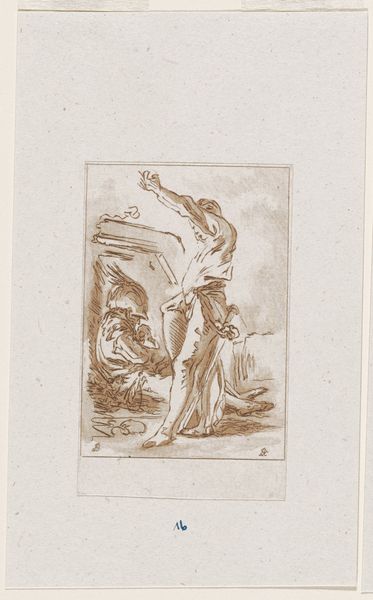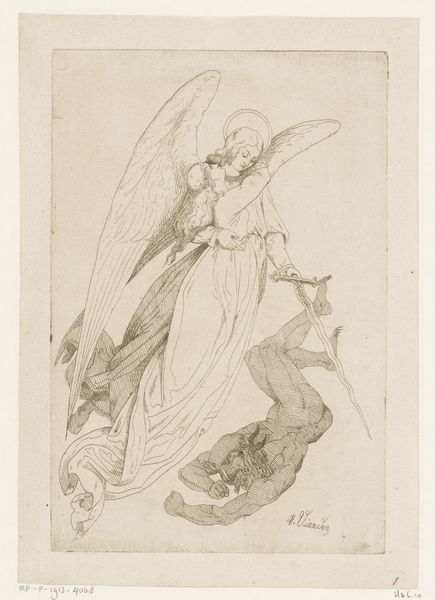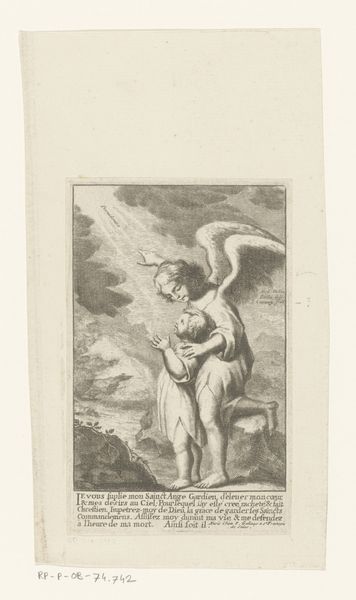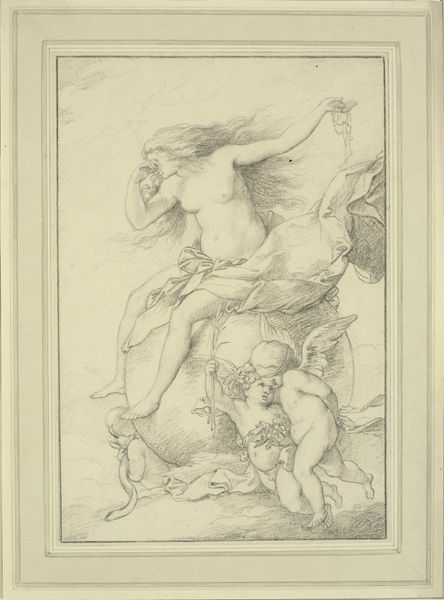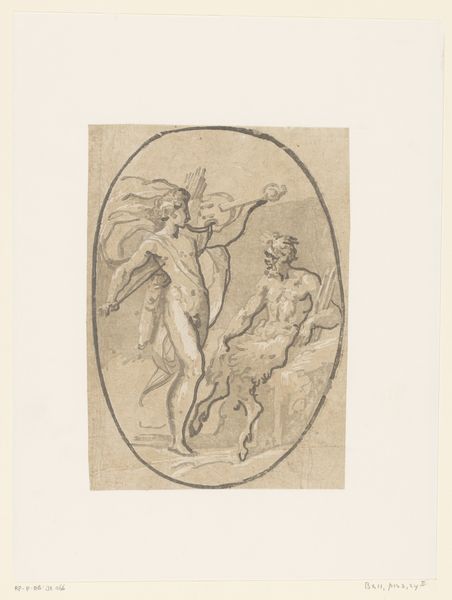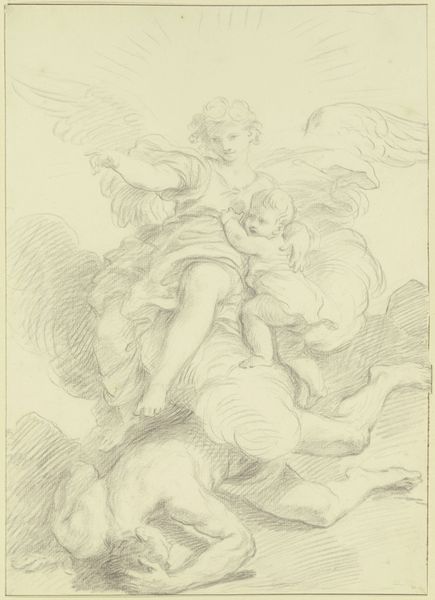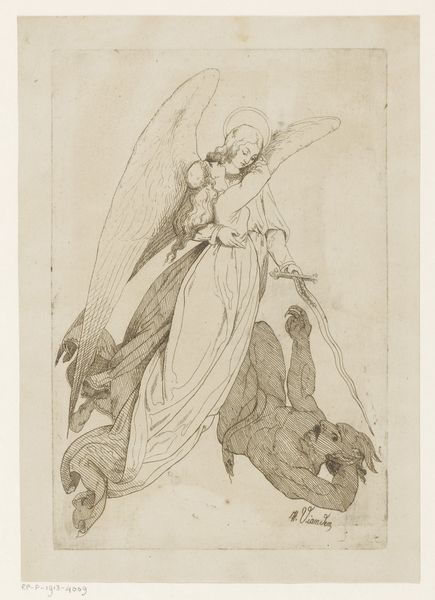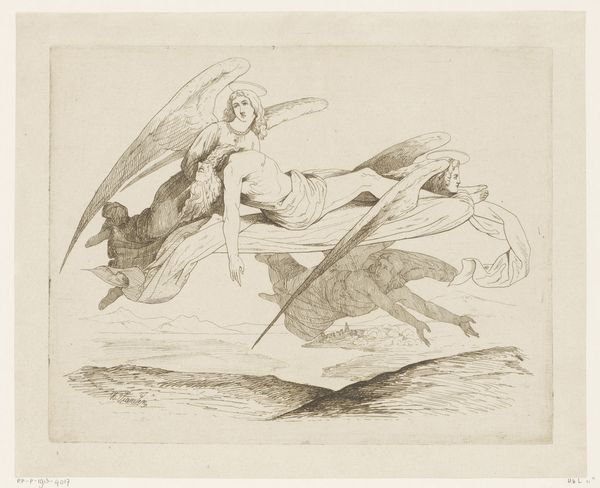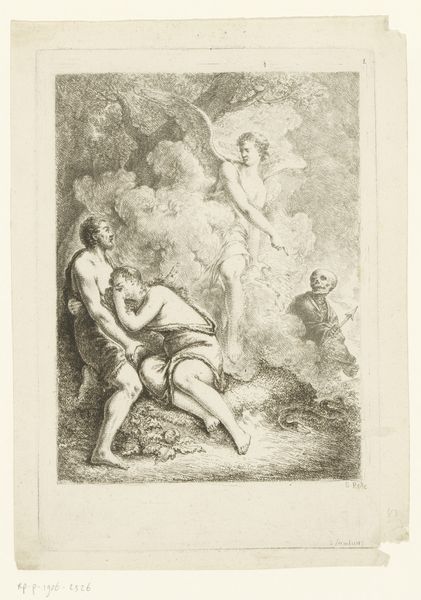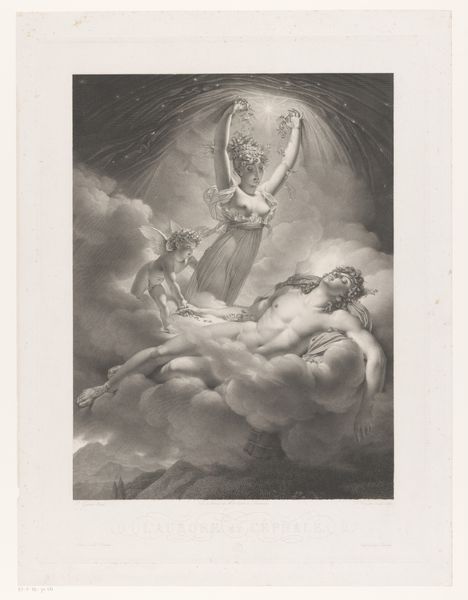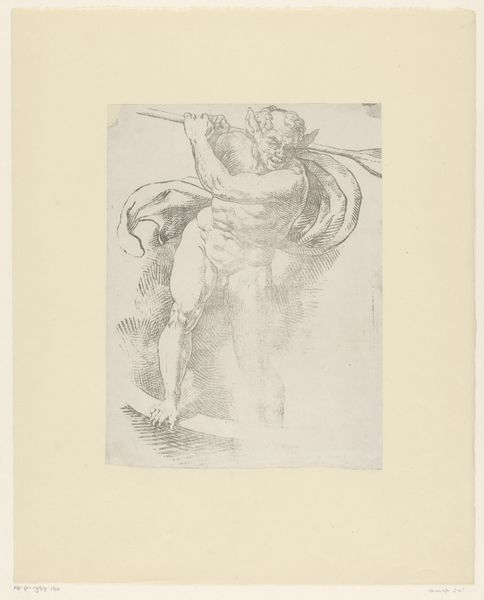
drawing, etching, paper, pencil
#
pencil drawn
#
drawing
#
narrative-art
#
etching
#
pencil sketch
#
etching
#
figuration
#
paper
#
pencil drawing
#
romanticism
#
pencil
#
line
#
history-painting
#
academic-art
Dimensions: height 269 mm, width 174 mm
Copyright: Rijks Museum: Open Domain
Curator: Immediately striking is the sheer tenderness conveyed by such delicate linework. The somber mood permeates, doesn't it? Editor: Indeed. The artwork, “Hagar en Ismaël in de woestijn,” made sometime between 1823 and 1869 by Charles Billoin, is rendered in etching and pencil on paper. What can you tell me of your initial impressions? Curator: The composition itself is masterful; see how the angel, Hagar, and Ismaël form a pyramidal structure, directing our gaze upward, a sort of ethereal elevation created solely through line and shade. Editor: It’s interesting that you use that word. Charles Billoin was indeed celebrated for such dynamic compositions, aligning perfectly with the academic traditions and its engagement with biblical narrative prominent in that era. But the political dimension in the image making is not straightforward. While it represents a moment of desperation, the eventual divine intervention may have been interpreted within particular colonial narratives. Curator: Yet regardless of interpretation, examine how Billoin uses varying densities of lines to model form, achieving a tangible weightlessness. Look at the rendering of the angel’s wings versus the draped fabrics, all communicated merely through line, value and, thus, volume. Editor: Absolutely. Furthermore, this narrative has resonated across diverse communities and artistic traditions because the Bible and the Qur'an both have related depictions of Hagar, albeit the telling of each is different. These common visual images have, on the other hand, served different purposes and bolstered different arguments when shared with broader audiences. Curator: The beauty lies, I think, in its aesthetic form—the masterful employment of academic ideals in artistic style, even though those were applied differently through political ideologies in time. Editor: A provocative point. While formal qualities provide a crucial lens, a comprehensive view necessitates recognizing how these elements functioned within broader systems of belief, authority, and reception. Thanks for considering the art from all angles! Curator: And thank you for broadening the lens through which we interpret form.
Comments
No comments
Be the first to comment and join the conversation on the ultimate creative platform.

